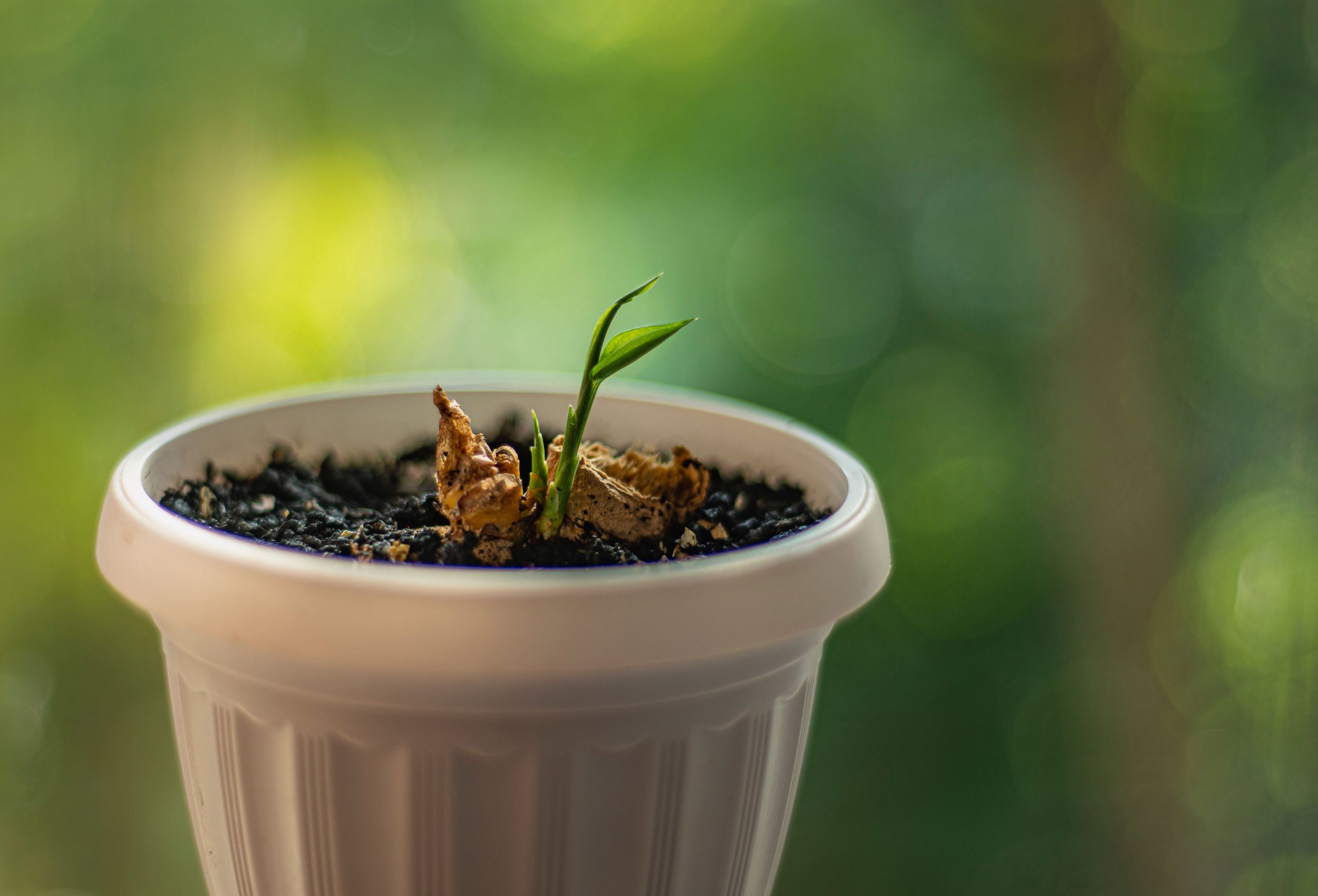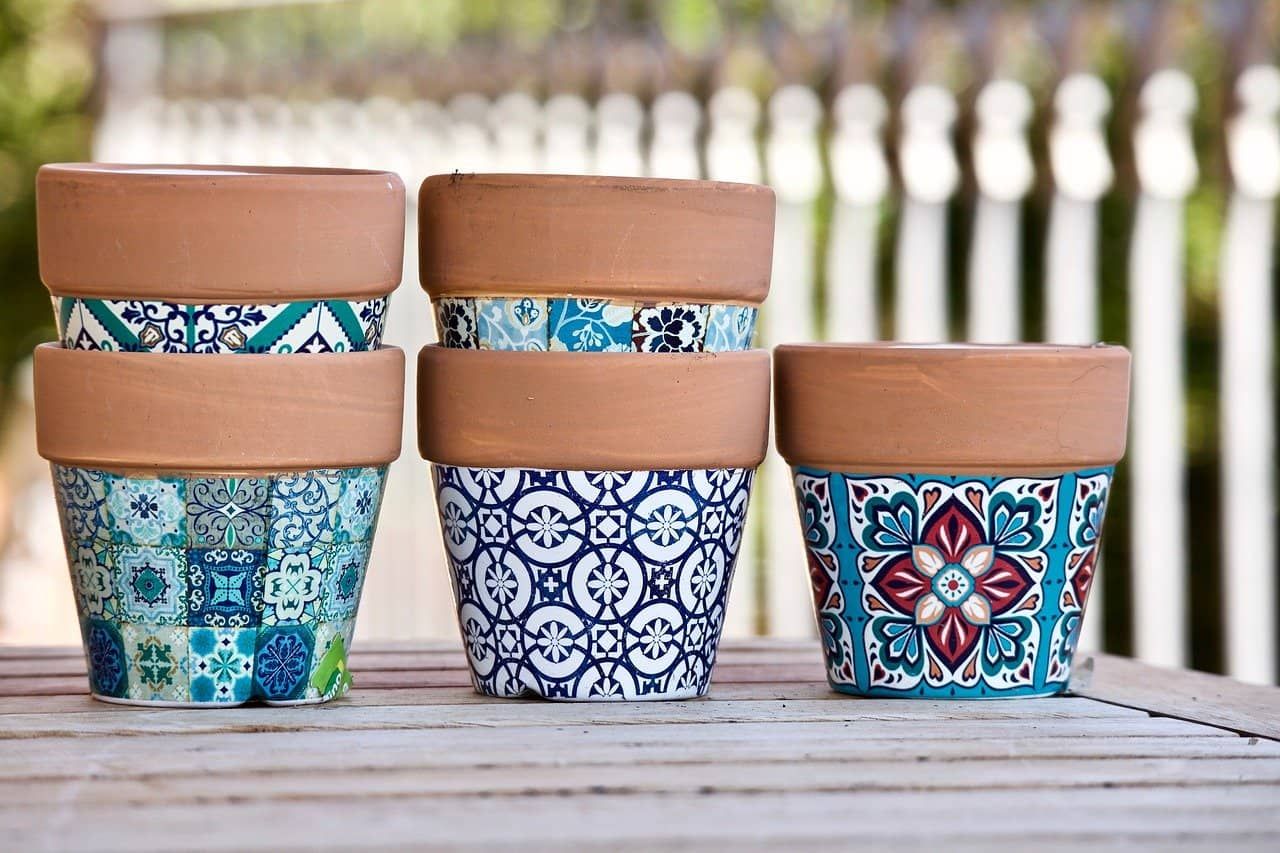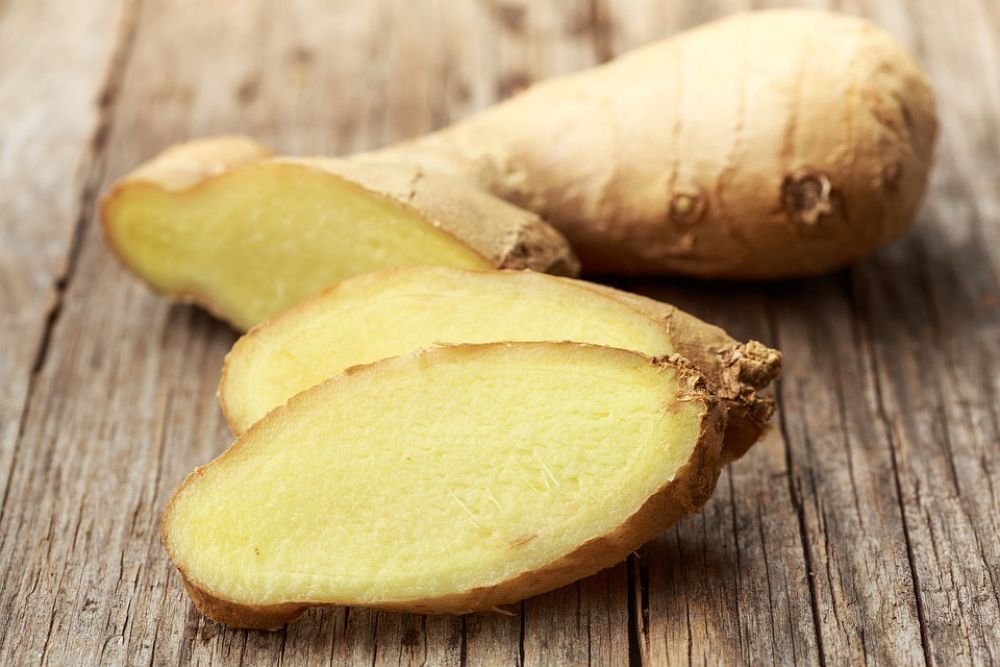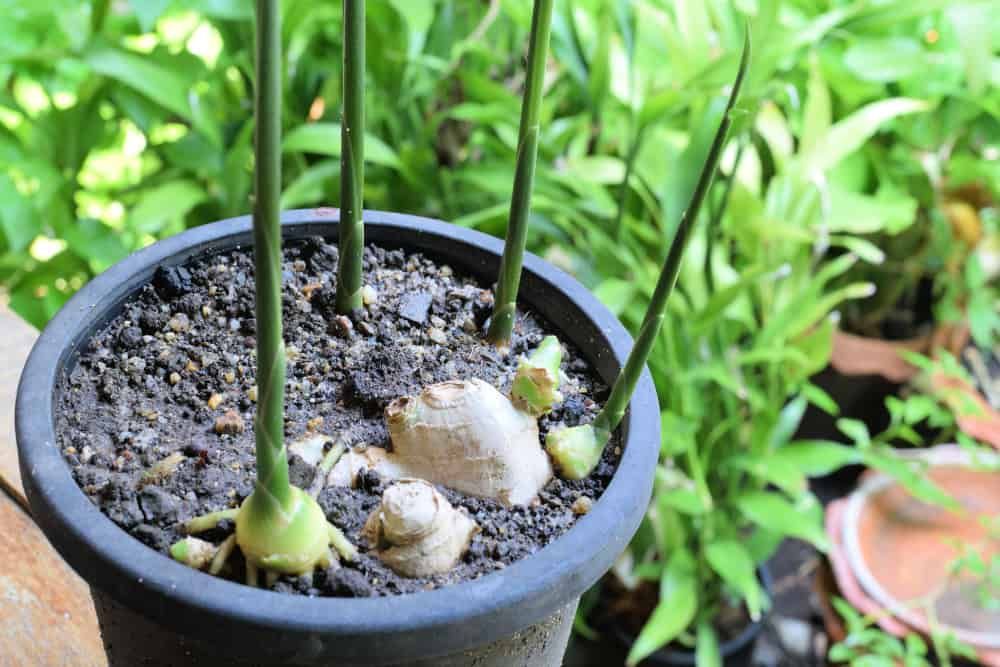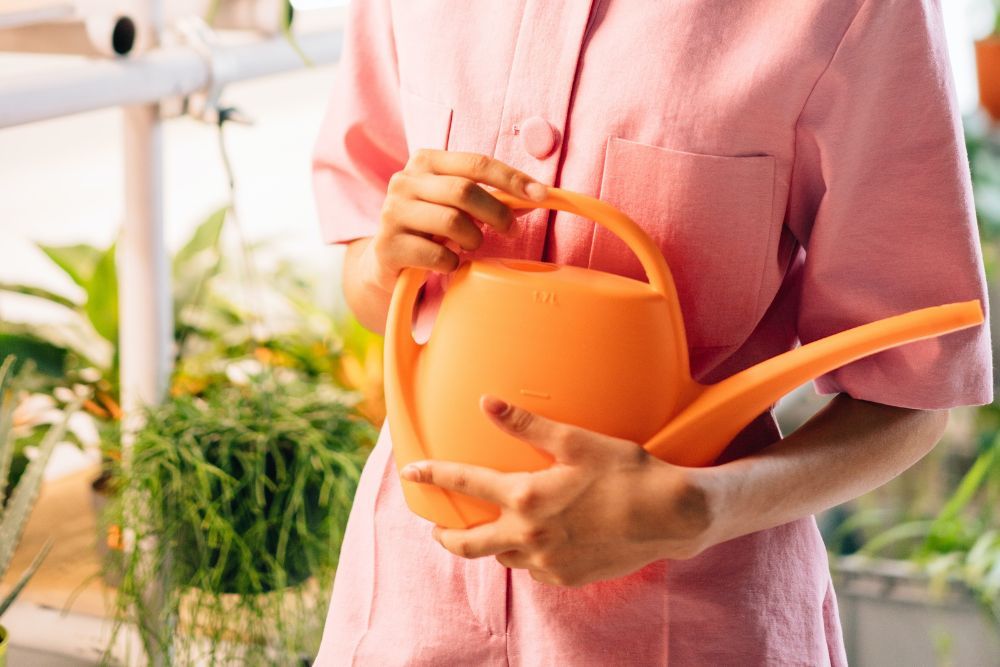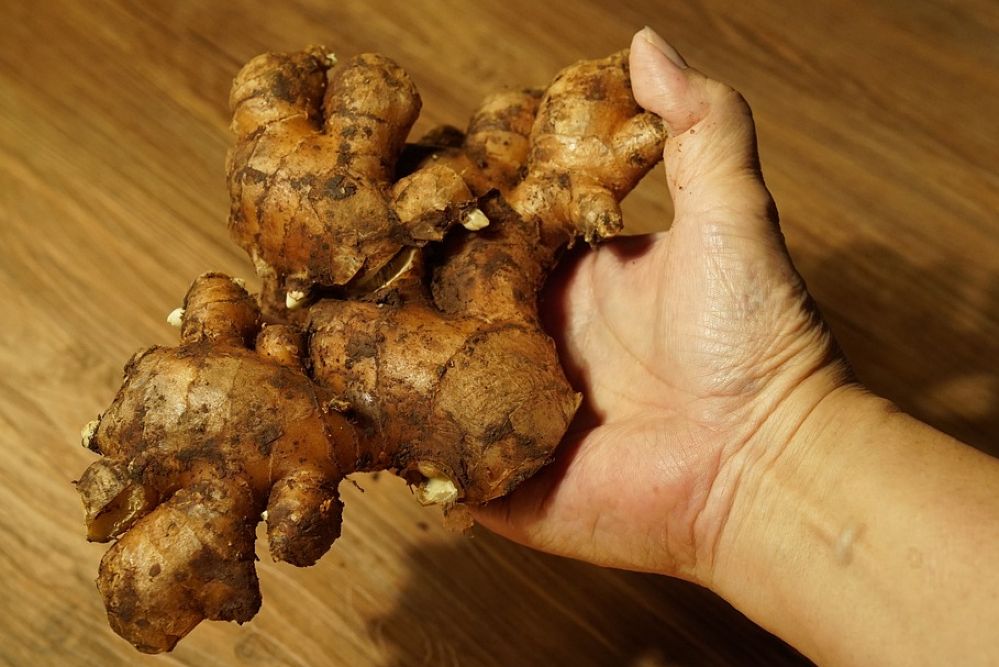Ginger (Zingiber officinale) is a potent, aromatic herb that is a staple in Asian and Indian cuisine and a highlighting feature of stir-fries and curries. Many people use the herb to alleviate stomach aches, boost the immune system, and improve metabolism.
It is a popular plant to grow at home, as it thrives in small gardening spaces and containers. So, if you are intrigued by all the many benefits of eating ginger or simply like to cook with this flowering plant, yet don’t have ample outdoor space, here are a few tips to help you grow ginger at home.
Start with the Right Pot
Image credits: sweetloiuse via Pixabay
The first step in growing ginger in a pot is choosing the right vessel. Ginger is a rhizome planted close to the soil surface and grows horizontally underground. So, you need a container that is wide and shallow. Opt for a pot at least 15 inches wide and 8 inches deep.
Ensure the pot has drainage holes, as waterlogged soil causes your crop to rot. If your container does not have holes in the bottom, you can drill some with an electric drill.
Prepare the Rhizome
Image credits: gate74 via Pixabay
You can grow ginger brought from the supermarket, but you need to treat it to remove the growth retardant applied to it. Simply soak the ginger in a water dish overnight to remove most chemicals. However, the recommended route for growing ginger at home is to purchase an organic rhizome from your local garden store for better chances of success.
Place your ginger rhizome on a kitchen counter or any clean surface in the sun to encourage sprouting. It can take a day or several weeks, so don’t worry if it takes a while. Once it sprouts, you can cut it into smaller pieces or plant the whole rhizome, depending on the planter’s size. A 2 to 3-inch long piece with two to three eyes (small bumps or buds on the ginger’s surface) is ideal for a small indoor pot.
If you divide the rhizome into smaller chunks, allow the cuts to cure and callous over for 24 to 48 hours before planting in the soil. If you plant immediately after cutting, the ginger pieces can rot.
Add Soil and Plan Feeding
Image credits: Neslihan Gunaydin via Unsplash
Ginger does best in loose, well-draining soil enriched with organic matter and a pH between 5.5 and 6.5. The loose, loamy soil is ideal since it promotes the growth of rhizomes, while compacted soil can inhibit it.
You must fertilize the soil during planting with an organic liquid or granular fertilizer. Continue feeding the plant once the shoots appear, every two to four weeks, for the best results. Check the instructions on the label to determine the quantity to use according to the container’s size.
Choose a Suitable Location
Image credits: Cattlaya Art via Shutterstock
Place your pot in a spot with bright, filtered sunlight from a north-facing window. Maintain the indoor temperature between 68 to 77 degrees to promote growth. If your home is cold, use a heat mat to provide the appropriate warmth the ginger plant favors.
Once the shoots and leaves appear, the plant can do with some more sunlight. Reposition your container to allow it to receive two to five hours of direct sunlight. You can remove it from the heat mat, but ensure that the indoor temperature stays above 55 degrees Fahrenheit.
Pro Tip: You can also put your container outdoors in a sheltered spot, on a patio, deck, or balcony, when all the danger of frost has passed, and the temperatures are consistently above 55 degrees Fahrenheit. Gradually expose your plant to the outdoor conditions over one to two weeks before making the final transition.
Pay Attention to Water and Humidity
Image credits: Cottonbro studio via Pexels
Ginger is a tropical plant that can neither withstand complete drying out nor waterlogging. It does best with regular watering to keep the soil moist. Water the plant from the bottom every five days to a week in the initial stages. Once the shoots appear, check the soil for dryness and water only when the top inch of the soil feels dry.
When it comes to humidity, most homes have a dry environment, whereas ginger plant prefers humidity levels between 40 and 50 percent. To compensate for the lack of moisture in the air, place your plant on a pebble tray or mist it regularly.
Harvest and Store
Image credits: SpencerWing via Pixabay
Ginger is a slow-growing plant that takes its sweet time before it is ready to harvest. It can take anywhere from eight to 10 months before the ginger is mature enough for you to enjoy the fruits of your labor.
Keep an eye on the shoots growing from the rhizome, and once they are at least 4 feet tall, you can pluck the entire plant from the soil. Remove the shoots and wash away the soil to prepare your ginger for consumption.
Store it in a ventilated container in a cool, dry spot away from direct sunlight for up to a week. You can also store the ginger in the freezer for about six months or refrigerator in an airtight container for about four to six weeks.
Pro Tip: You can harvest as much as you want by brushing aside the soil around the shoot to expose the rhizome. Give the shoot a solid tug to break a small piece and allow the rest of the plant to grow.
Grow Glorious Ginger
While ginger is notorious for being a slow grower, it requires patience and a lot of love before it is ready to spice up your life. The best time to start your ginger plant indoors is early spring, so start collecting the supplies and, as always, share below any questions, thoughts, or comments!

